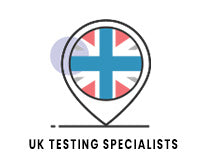Drinking Water Lead and IQ: Health Impacts of Lead Contamination in Kids

The impact of acute lead poisoning is well documented. The fact that lead accumulates in the body from environmental exposure has driven, over the last 50 years, governments around the world to remove lead from paints, fuel, and consumer goods. Since the 1970s, new homes in the UK have been built without lead pipes and strict regulations on plumbing materials now exist. However, existing service pipes to older homes, lead-containing plumbing, including brass fittings and solder joints are still a major source of lead in drinking water.
The European Commission reduced the maximum acceptable concentration of lead in drinking water from 50 µg/L to 10 µg/L [1]. It is natural to view this as the safe limit and believe that so long as our drinking water remains below this new limit, we are okay.
The World Health Organization sets no safe limit on the concentration of lead in drinking water.
Even low lead levels in blood have been linked to a range of negative health effects. In 2000 alone, it was estimated that globally 229,000 premature deaths were attributed to high blood pressure from life-long exposure to lead [2]. Large-scale studies have shown that irreversible developmental effects in children result from exposure to low levels of lead in drinking water. This includes reduced attention spans, lower cognitive function, and disruptive behaviour [3].
In one study, scientists looked at over 1,300 children, following them from birth until 5-10 years of age with the aim of assessing the child’s IQ at different levels of lead in their blood. They found that IQ decreased by nearly 7 points as the concentration increased from 2.4 to 30 µg/dL. They also showed that this is a non-linear process, with the largest impact on child intelligence associated at the lowest concentrations of lead.

Figure 1: Impact on average IQ values of increased blood lead concentrations [4].
Not only do these findings highlight there is no safe limit of lead in drinking water, they show the benefit of reducing already low levels of lead is significant [4].
How water lead levels translate into blood lead levels remains an active area of research and debate. Recent studies have been able to assess the absorption of lead at low levels. These have shown that an increase in lead concentration of just 1 µg/L for levels below 10 µg/L results in a 35% increase in the blood level in children, with the largest effects observed in the youngest age group [5]. Most studies have looked at the impact of lead in drinking water in large groups where it is difficult to assess a clear connection.
One study has shown a clear response in infants where blood lead levels increased by 1µg/dL with drinking water that exceeded 5 µg/L. This is already worrying since it is now believed that blood lead levels as low as 1-2µg/dL result in negative health effects associated with fertility, neurological, cardiovascular, and renal disorders [6]. Evidence is now mounting that further reductions in our exposure to lead will be a significant benefit to the general health and wellbeing of society.
If you are worried about potential lead contamination in your water or simply want peace of mind, we recommend getting your water tested in our laboratory.
- EU Commission, Water, SCHER-Scientific Committee on Health and Environmental Risks. Lead standard in drinking, 2011.
- A. Prüss-Üstün, L. Fewtrell , P.J. Landrigan, J.L. Ayuso-Mateos, World Health Organization; Comparative Quantification of Health Risks 2004
- World Health Organization,Childhood lead poisoning, 2010.
- BP Lanphear, et al. low-level environmental lead exposure and children intellectual function: an international pooled analysis. Environ Health Perspect., vol. 113, pp. 894-9, 2005.
- G. Ngueta, et al. Use of a cumulative exposure index to estimate the impact of tap water lead concentration on blood lead levels in 1- to 5-year-old children. Environ Health Perspect., vol. 124, p. 3, 2016.
- World Health Organization. Lead in drinking-water. Background document for development of WHO Guidelines for Drinking-water Quality, 2011




















